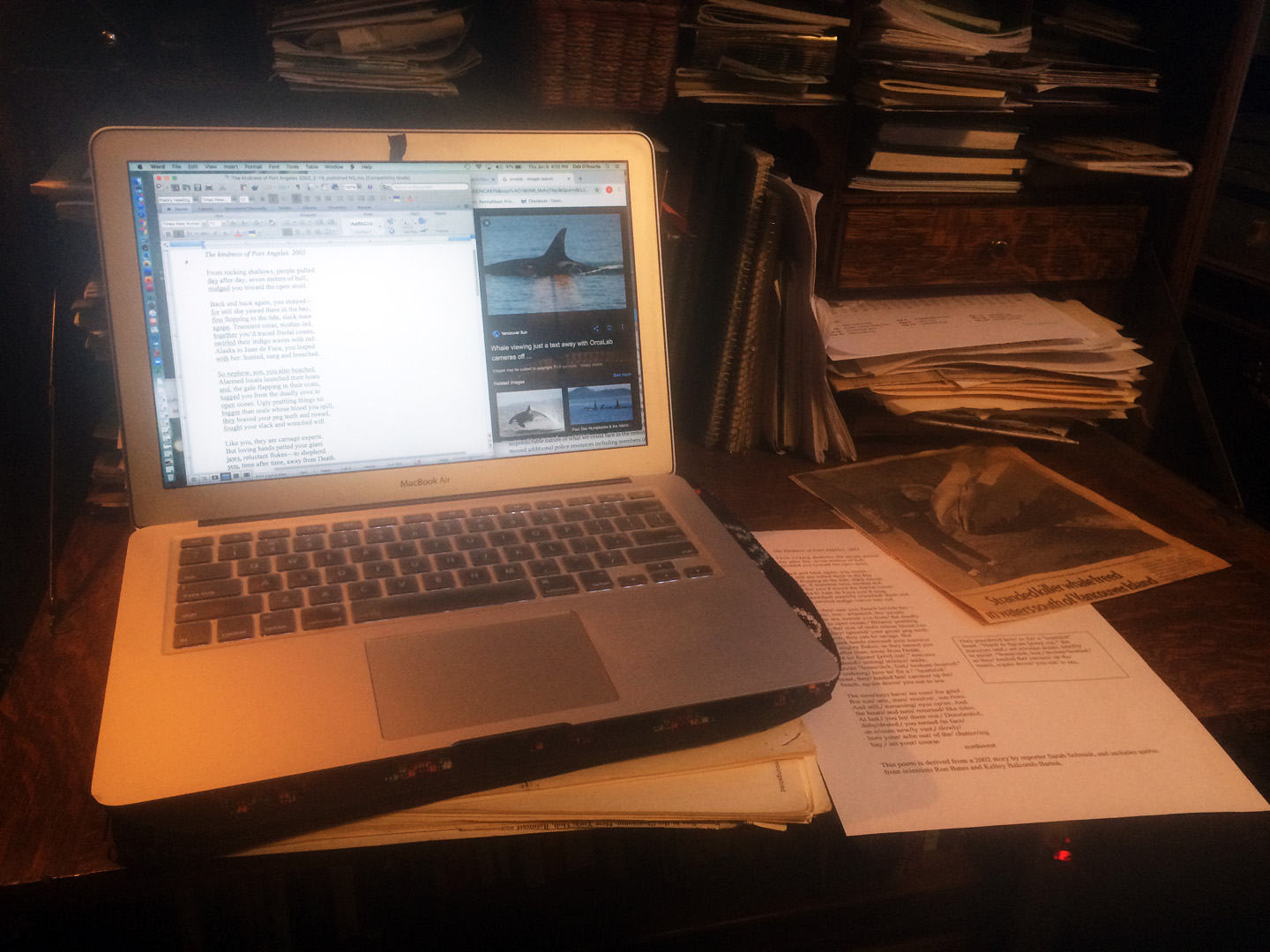Finding the Form with Deb O’Rourke
By Deb O'Rourke
The Kindness of Port Angeles was made the hard way. No incident, dream or inspired line sent me running to the computer. I built the poem brick by brick, in response to a news story that had haunted me for years.
I began by collecting images and quotes from the article. I researched the orca to ensure that I filled in the gaps with facts, not romance. After a solid week of work, I had a very rough draft. The first two lines were problematic—they rhymed.
I write free verse, usually beating back the incidental rhymes that pop up. But these lines set the rhythm and tone I wanted, so I turned to Leonard Cohen and T. S. Eliot, to study non-traditional rhyme. I was encouraged by Cohen’s statement that in searching for rhyme, “you’re invited to explore realms that you usually don’t get to in ordinary, easy thought.” I saw that rhyme needn’t be regular—it can be used where it’s wanted and needed. But discipline, in the form of organic consistency, is necessary.
“Perhaps the rhyme’s outrageousness provides some comic relief in a serious poem, as does the orca’s view of the humans as awkward primates”
For this poem, rhyme opened up the stilted product of labor to chance and discovery. My favorites are subtle near-rhymes, like strait/strayed. Death/shibboleth I laughed at and rejected. But I ended up using it, because it precisely expresses the scientists’ struggle to explain something that their training gave them no concept for. Perhaps the rhyme’s outrageousness provides some comic relief in a serious poem, as does the orca’s view of the humans as awkward primates.
In free verse, I find a poem’s structure rather than setting it. So there’s often a stage when I parse it to find out what it’s doing. For this poem, roughly equal line lengths reflect the rhythm of time and tides. I tried tercets and quatrains but they killed the poem, so I kept the stanza structure loose.

The Kindness of Port Angeles was a breakthrough piece for me. I learned to build a poem through will and work. What I discovered about rhyme added another tool to my writer’s toolkit. It took weeks of work, over a period of about two years. It was my second success in the Nick Blatchford Occasional Poetry Contest.
The other second prize poem, Comet Lovejoy in 2016, was made very differently. I had a decent draft within an hour after the comet and I had our [non]encounter. Resolving it was matter of hours, stretched over a few unhurried weeks. I’m relieved that I can bull through something difficult that I’m determined to write, but glad it doesn’t always have to be that way.
I agree with Paul Valéry that: “A work is never completed, but merely abandoned”. For both poems, I made a small change or two after it was accepted for publication. I struggle with finishing artwork, and I appreciate a relationship with the publisher that allows me to see the poem set in place before I abandon the search for resolution.
Deb O’Rourke’s work appears in various cultural and journalistic publications, view her art at www.milkweedpatch.com. She’s thrilled by her second inclusion among the Nick Blatchford Occasional Verse Contest winners.
Photo by Frank Busch on Unsplash.

